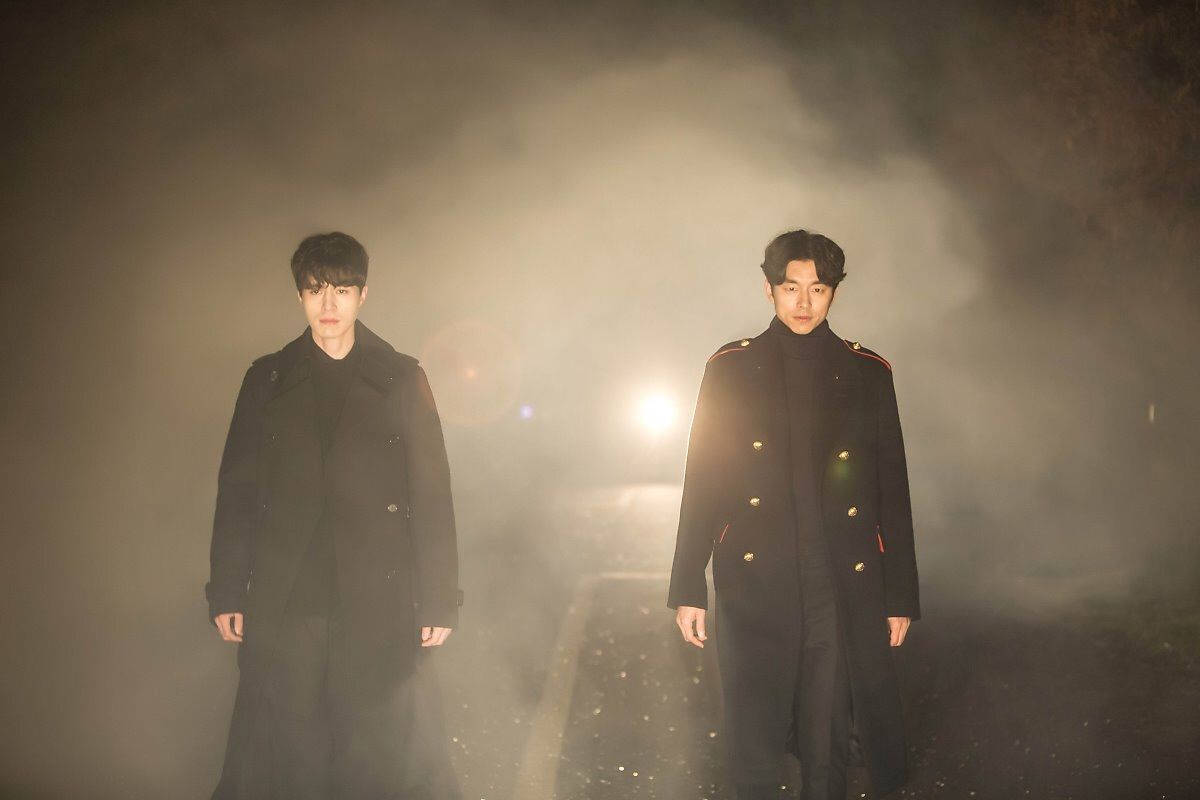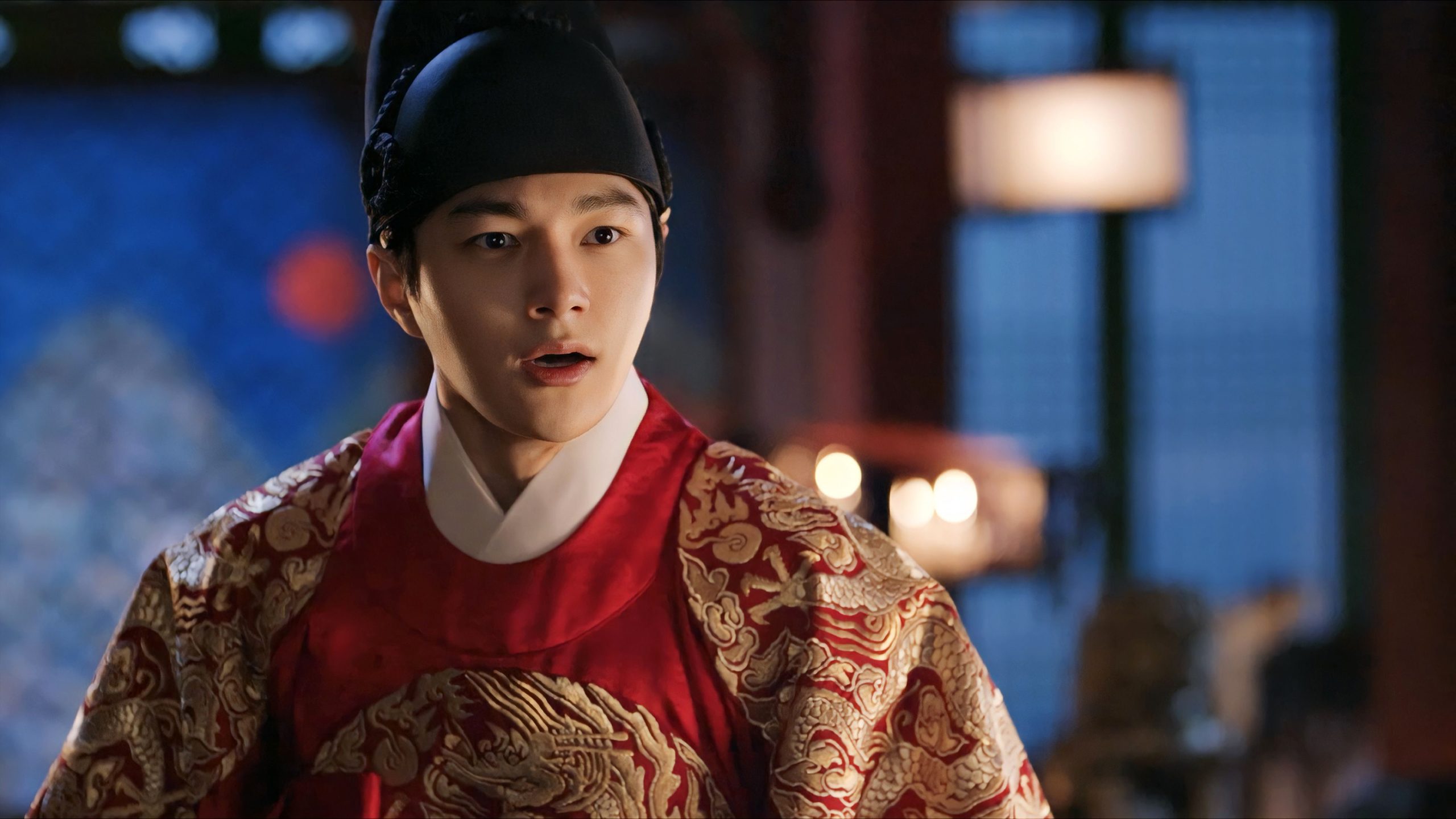How many times have you watched a romantic K-drama and seen the classic umbrella scene? Or heard the iconic line, “Ramyeon meokgo gallae?” (“Do you want to eat ramyeon?”). K-dramas are filled with hidden symbols—colors, objects, and even food, each carrying a deeper meaning.
Today, we’ll start with COLORS. What’s up with villains in black, angels in white, and kings drowning in red? Let’s decode it all!
White

We all know white symbolizes purity and innocence, but in K-dramas, it’s often a visual clue to a character’s true nature. Ever noticed how angels, time-travelers, or “good souls” are draped in white? For example, take Hae-Soo from ‘Moon Lovers: Scarlet Heart Ryeo’—her soft white hanboks scream “innocent teenager trapped in a palace war.” Similarly, Dan in ‘Angel’s Last Mission: Love’ rocks a crisp white suit to remind us he’s literally heaven-sent. But here’s the twist: could white also hint at vulnerability? After all, these characters often face brutal realities. Is their “purity” a shield… or a target?
Black

Black is the go-to color for characters shrouded in mystery, pain, or danger. Grim reapers in ‘Guardian: The Lonely and Great God’ and ‘Black’ don black suits, embodying death’s inevitability. But black isn’t just for grim reapers and villains—it’s armor for the emotionally wounded. Ko Moon-young in ‘It’s Okay to Not Be Okay’ stuns in her Gothic black dresses, hiding her trauma beneath a fierce exterior. Even Lee Yeon from ‘Tale of the Nine Tailed’ uses black to mask his centuries-old grief.
Fun twist: Sometimes, black signals power. Ever notice CEOs or chaebols in ‘The Heirs’ or ‘Secret Garden’ wearing sharp black suits? It’s all about control and authority, with a side of brooding.
Red

In South Korea, the color red holds several meanings.
Red is a chameleon. In historical dramas (like Lee Hwon in ‘Moon Embracing the Sun’, King Cheoljong in ‘Mr.Queen’, and Crown Prince Lee Sun in ‘The Emperor: Owner of the Mask’), it’s the color of royalty—kings’ crimson hanboks scream authority. But red also has a mystical side. Remember Ji Eun-tak’s red scarf in Goblin? It wasn’t just a fashion choice—it symbolized protection against evil spirits, rooted in Korean folklore.
Dark Color Palette: When Shadows Speak Louder Than Words

Ever wondered why some K-dramas feel visually heavy and dark?
Dark, muted tones aren’t just for aesthetics—they’re emotional amplifiers. Think of colors like charcoal gray, muddied brown, navy blue, or even ashy white. These shades drown scenes in an eerie, somber, or suspenseful mood, often representing a character’s inner turmoil or a story’s tragic core.
Take Lee Ji-an from ‘My Mister’—her dreary life is shown in grays, browns, and washed-out blues. Her faded sweaters and dimly lit apartment all scream exhaustion, poverty, and loneliness.
Thrillers and crime dramas like ‘Voice,’ ‘Strangers From Hell,’ and ‘Through the Darkness’ use dark palettes to unsettle viewers. These dramas tend to lean a lot on stark blacks and grays to mirror the grim minds of serial killers and psychopaths. Even ‘Juvenile Justice’, a drama about flawed systems, uses harsh lighting and desaturated tones to reflect the moral ambiguity of its courtroom battles.
Dark colors aren’t just “sad”—they have the power to create tension. A sudden splash of red blood on a gray wall can jolt viewers, making violence or fear feel raw and immediate.
Colourful Colour Palettes: When Life Feels Like a Candy Store

Why do some K-dramas look like they’ve been dipped in sunshine and rainbows?
Bright, playful colors represent youth, school romance, and lightheartedness. Pastel pinks, baby blues, creamy whites, and soft yellows dominate dramas about first loves, school crushes, or healing romances. These hues aren’t random—they’re visual dopamine!
High school dramas like ‘Extraordinary You’, ‘True Beauty,’ and ‘My ID is Gangnam Beauty’ drown their scenes in cotton-candy aesthetics. Not just the actors, but also the surroundings, including classes that glow with pinks, oranges, and lavenders, mirroring the chaotic, dreamy mess of teenage emotions. Sometimes, I feel like some scenes in ‘True Beauty’ feel like Instagram filters—even the soft pinks for Ju-kyung’s shyness.
But it’s not just for teenagers! Adult romances like ‘Hometown Cha-Cha-Cha,’ ‘Start-Up,’ and ‘Run On’ use light, airy tones to show positivity, growth, and hope. The seaside village in ‘Hometown Cha-Cha-Cha’ is filled with creamy whites, cute yellows, and ocean blues, making every scene feel like a warm hug. Similarly, ‘Search WWW’ balances its tech-heavy plot with soft peach and mint tones in office spaces, proving that adulthood doesn’t have to be all grays and suits.
Did You Know?
Even Korean dating shows use color psychology!
South Korean dating shows like ‘Single’s Inferno,’ ‘Exchange’ and ‘Skip Dating’ use soft hues, warm tones and sunset-like filters. Soft pinks, whites, peachy tones, and golds aren’t just pretty—they’re designed to make viewers feel the “sparks” and butterflies of romance. Producers know that these colors can trick your heart into feeling the chemistry!
My Personal Favorite Palette: ‘Hotel del Luna’
Personally, Jang Man-wol’s wardrobe in ‘Hotel del Luna’ is a masterclass in color storytelling—her iconic purple gown is such a MOOD! I fell in love at first sight with all her fiery dresses. And the hotel? It might be a place for dead souls, but to me, it looks like a palace mixed with Instagram-worthy gold chandeliers and beautiful tones. Seriously, how does a hotel for ghosts look this glam?
What’s YOUR K-Drama Color Obsession?
Did you ever spot a character or a particular scene where colors made you feel everything? Drop your favorites in the comment section below. And, stay tuned for Part 2!
Written by Diksha Gangadeen
Connect with us on Instagram | X | YouTube for more content, interviews, & news.














